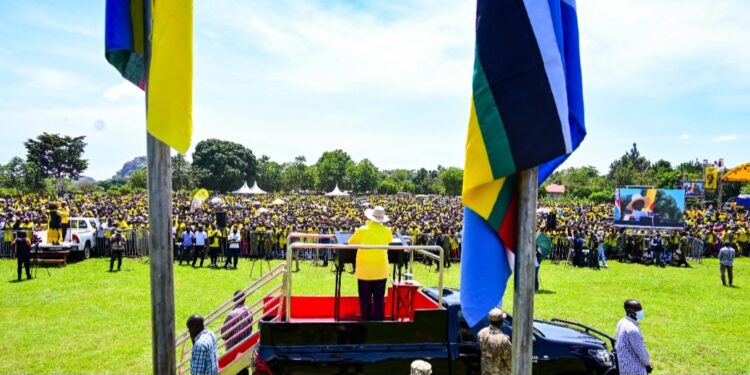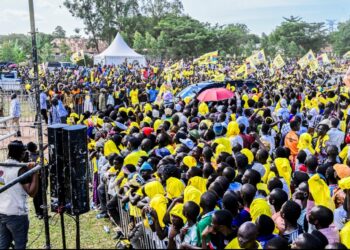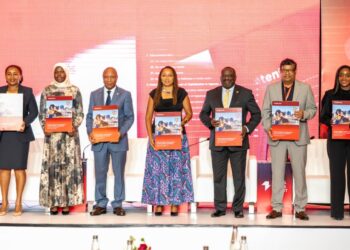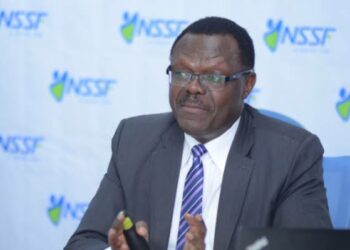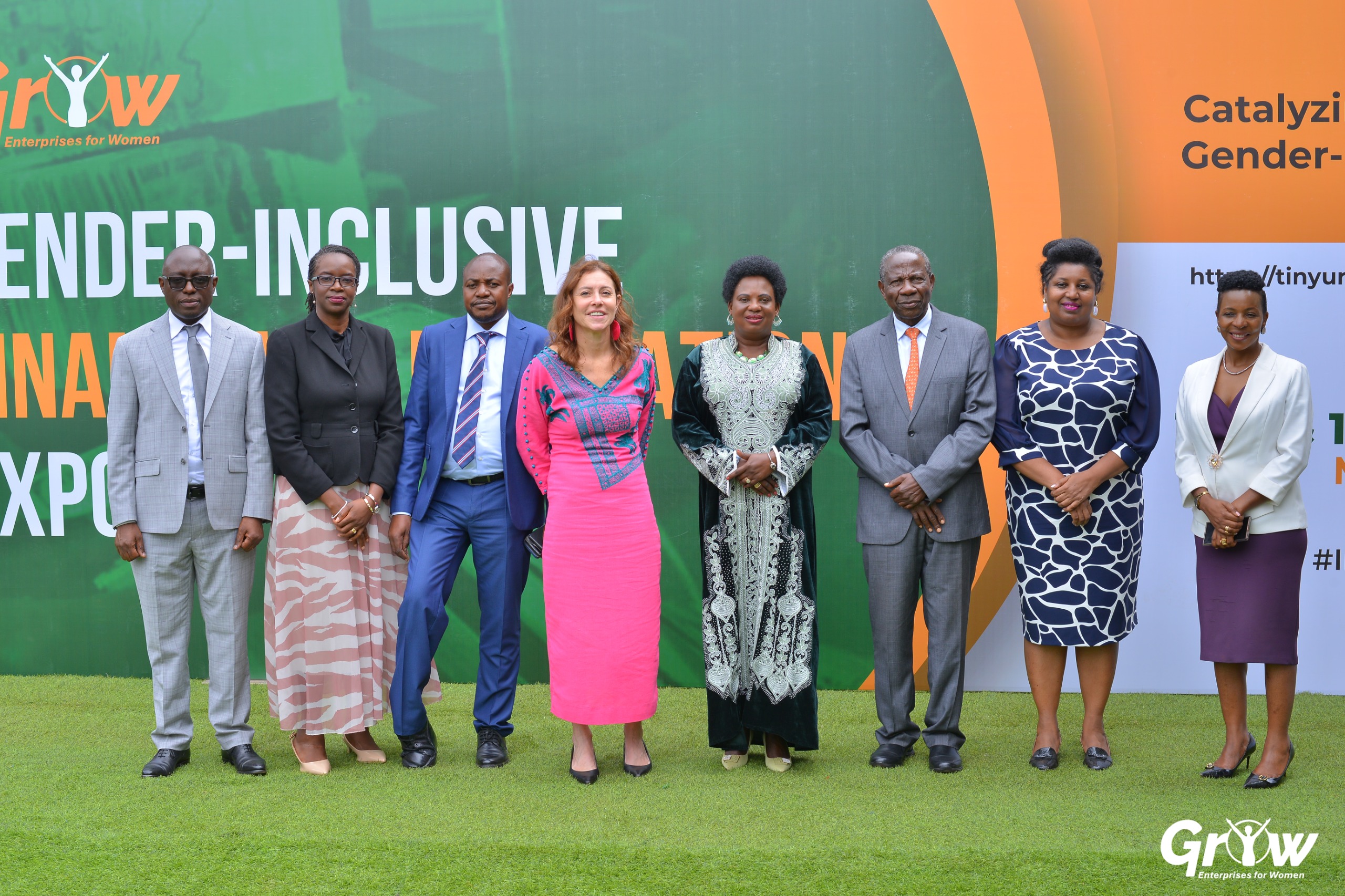President Yoweri Kaguta Museveni has called upon the people of Ngora District and Teso Sub-region to continue supporting the National Resistance Movement (NRM) to sustain the country’s peace, stability, and economic transformation programs.
President Museveni, who is also the NRM presidential flag bearer in the 2026 general elections, made the appeal on Tuesday 4th, November, 2025, while addressing thousands of supporters in Ngora District on his vote-hunting trail across the Teso sub-region.
He said the NRM government has over the years proved its capacity to move Ugandans out of poverty through consistent investment in peace, infrastructure, and wealth creation initiatives that empower citizens to create income and build prosperity.
“Politics is not about the words of politicians just talking. The politics of NRM is about solving people’s problems by showing them the way and assisting them in every possible way,” President Museveni said.
The President said the NRM has, since its inception, emphasized practical solutions to poverty through programs such as Entandikwa, NAADS, Operation Wealth Creation (OWC), Emyooga, Women Fund, Youth Fund, and the Parish Development Model (PDM) — the latest in a chain of government-backed livelihood programs targeting the grassroots.
President Museveni assured the people that as long as Ugandans keep supporting the NRM, such empowerment programs would not only continue but also expand.
“All these programs are meant for you to get out of poverty. If you support NRM, we shall continue,” he said.
“On PDM, we shall add another 15 million shillings onto the Shs100 million cash per parish. We shall create a fund for fishermen, another for religious leaders, cultural institutions, and for university graduates who have failed to get jobs after two years or more,” H.E. Museveni emphasized.
Peace: NRM’s first contribution
Reflecting on the historical background of the Teso region, President Museveni reminded the people of Ngora of the dark days of rebellion and insecurity that once characterized their lives before NRM restored peace.
He narrated that during the insurgencies of the late 1980s and early 1990s, he had his military camp near the Nyero Rocks and commanded decisive battles against rebels in areas such as Kongoro and Kanyu, leading to the defeat of Alice Lakwena’s Holy Spirit Movement.
“You people of Ngora and Kumi are witnesses to what was happening here. Those were difficult times, but together we managed to get peace. That’s why we no longer have internally displaced people’s camps. It was the NRM, together with the people, that brought this peace,” Gen. Museveni said, adding that peace remains the cornerstone of development and the reason Ugandans can now engage in productive work and education.
President Museveni cited major improvements in infrastructure as the second pillar of NRM’s contribution to Uganda’s transformation, noting that the region has seen substantial progress in both economic and social infrastructure.
He highlighted ongoing efforts to improve the road network linking Ngora to neighboring districts, saying the Kumi–Ngora–Serere–Kagwara road has already been secured and awaits a contractor to commence construction.
“Our former battleground is now a place of development. The tarmac roads now reach up to Kumi, Soroti, Lango, and even Karamoja,” President Museveni noted.
He thanked local leaders for supporting government programs that ensure efficient implementation of infrastructure projects across Teso.
On energy, candidate Museveni reported that Ngora District is now connected to the national electricity grid, with nearly all sub-counties receiving power supply.
On water access, the President noted that out of 146 villages in Ngora District, 131 villages (representing 90%) have access to safe water. He said the remaining 15 villages would soon be connected through new water projects.
Major achievements include the Gawa Small-Scale Irrigation Project in Kobwin Sub-County covering 12 acres, rehabilitation of 7 boreholes and 11 water sources, and the construction of 4 piped water systems powered by solar energy in Mukura Sub-County.
Ongoing projects include the construction of a solar-powered water supply system in Olilim Village, Mukura Sub-County, while planned works will include the Mukura Town Council piped water supply system and the ambitious Lake Kyoga Multi-purpose Gravity Flow Scheme, which will serve Ngora, Serere, Kumi, and Bukedea districts.
“We are going to pump water from Lake Kyoga to supply all these areas. It will be easy because the land is flat,” H.E. Museveni explained.
Expanding Education Access:
President Museveni emphasized that the NRM government remains committed to providing free education for all children, a program that began in 1996. He decried the continued charging of school fees in government-aided institutions, calling it a betrayal of the spirit of Universal Primary and Secondary Education.
Ngora District currently has 59 government primary schools, 56 private primary schools, 6 government secondary schools, and 26 private secondary schools. The district has 73 parishes, of which 48 host at least one government primary school, while 25 parishes still lack one.
The President said the government’s target is to ensure every parish has a government primary school and every sub-county a secondary school. Construction of a Seed Secondary School in Ngora is ongoing, and upon completion, the number of sub-counties without a government secondary school will reduce from six to five.
Traditional institutions like Ngora High School and Ngora School for the Deaf will also undergo rehabilitation under the education infrastructure development plan.
He also cited his Presidential Skilling Hubs, including one in Soroti, which skill youth in practical trades such as furniture making, metal fabrication, and textile production.
“These youths are now earning money by producing what we used to import,” he noted.
Turning to the health sector, President Museveni said that of the 11 sub-counties in Ngora, one currently hosts a Health Centre IV, while six have Health Centre IIIs, leaving five sub-counties without any public health facility.
He announced ongoing and planned projects to close that gap, including upgrading Opot HCII in Opot Sub-County to HCIII, upgrading Atoot HCII to HCIII, and the construction of new HCIIIs in Agirigiroi, Morukakise, and Ngora sub-counties.
Ongoing works include fencing Mukura HCIII, building an immunization shade, and constructing a twin staff house to support medical personnel.
President Museveni said expanding access to health and education is part of the NRM’s social contract to ensure every Ugandan lives a dignified life.
However, the President reminded the people of Ngora to distinguish between development (which benefits all citizens collectively) and wealth creation (which is personal and household-based).
“The school and health centre are for all of us, but what is private and personal is either wealth or poverty. You must engage in income-generating activities to chase poverty from your homes,” H.E. Museveni explained.
He emphasized the four key wealth-creation sectors, commercial agriculture, manufacturing/artisanship, services (transport, etc.), and ICT, urging every Ugandan to actively participate in at least one of them.
President Museveni showcased a success story of Joseph Ijala from Serere District, who ventured into commercial poultry and dairy farming.
“When I visited him, he was earning three million shillings a day from eggs and selling 300 litres of milk daily,” he said.
“Now he earns six million shillings from eggs and Shs800,000 from milk – that is 6.8 million shillings a day, or over two billion shillings a year. This man is deep inside Serere, not near a tarmac road, but wealth is there,” President Museveni said.
He commended the performance of the Parish Development Model in Ngora District, which has 73 parishes and has so far received Shs 22.4 billion. Out of this, Shs 22.395 billion (99.93%) has already been disbursed to 22,395 beneficiary households, covering 69.3% of all households in the district. Those yet to benefit total 9,926 households (30.7%), including some already engaged in the money economy.
Under the Emyooga program, Ngora has 36 SACCOs with 7,509 members, and the government has disbursed Shs 1.68 billion to support them.
Cattle Restocking and Compensation:
Addressing the long-standing issue of cattle loss during insurgencies in Teso, Lango, and Acholi, President Museveni said the government has finalized a new uniform compensation strategy.
“When we got peace, we started restocking, but along the way, some lawyers went to court and caused confusion. We spent Shs 159 billion, but the money didn’t reach the ground,” President Museveni revealed.
He said the new plan will compensate each affected household with five cows as a flat rate to ensure fairness and efficiency.
“We are therefore adopting that plan for the area of Teso, Lango, and Acholi. In addition to the other measures, they will continue, but we shall also add on this one. So, it is time for all of you to get out of poverty,” President Museveni said.
The NRM Second National Vice Chairperson and Speaker of Parliament, Rt.Hon. Anita Annet Among welcomed President Museveni to Ngora, describing it as one of the most peaceful districts in the Teso Sub-region.
She thanked the President for allocating Shs 1 billion for road rehabilitation in Ngora, which she said has been properly utilized.
Rt. Hon. Among also commended the Standard Gauge Railway (SGR) route from Tororo to Gulu that passes through Ngora, saying it will boost trade and connectivity for local communities.
The NRM Vice Chairperson for Eastern Region, Mr. Calvin Echodu hailed the district’s leadership for being the first in Teso to establish an NRM office, calling it a symbol of the party’s grassroots strength.
Ngora District NRM Chairperson, Hon. Okello John Michael commended President Museveni for maintaining peace and spearheading development programs like PDM and Emyooga, which he said are transforming livelihoods. He also relayed community requests for a technical school, a district hospital, and additional tarmacked roads.
Ngora’s Political Outlook:
According to the 2024 census, Ngora District has a population of 213,777 people, spread across 11 sub-counties/town councils, 73 parishes, and 146 villages.
In the 2021 presidential elections, Ngora had 72,976 registered voters, of whom 44,943 (60.6%) turned up to vote. President Museveni polled 24,662 votes (57.1%), while Patrick Oboi Amuriat (FDC) got 14,618 (33.8%), NUP’s candidate 2,237 (5.2%), and others shared 1,657 (3.9%).
By 2025, Ngora’s voter register has grown to 85,696, with 200 polling stations, up from 121 in 2021, reflecting significant voter mobilization ahead of the 2026 general elections.
The rally, which drew thousands of enthusiastic supporters, was attended by several senior government officials, NRM Central Executive Committee members, ministers, and Members of Parliament from across the Teso Sub-region.
Do you have a story in your community or an opinion to share with us: Email us at editorial@watchdoguganda.com

